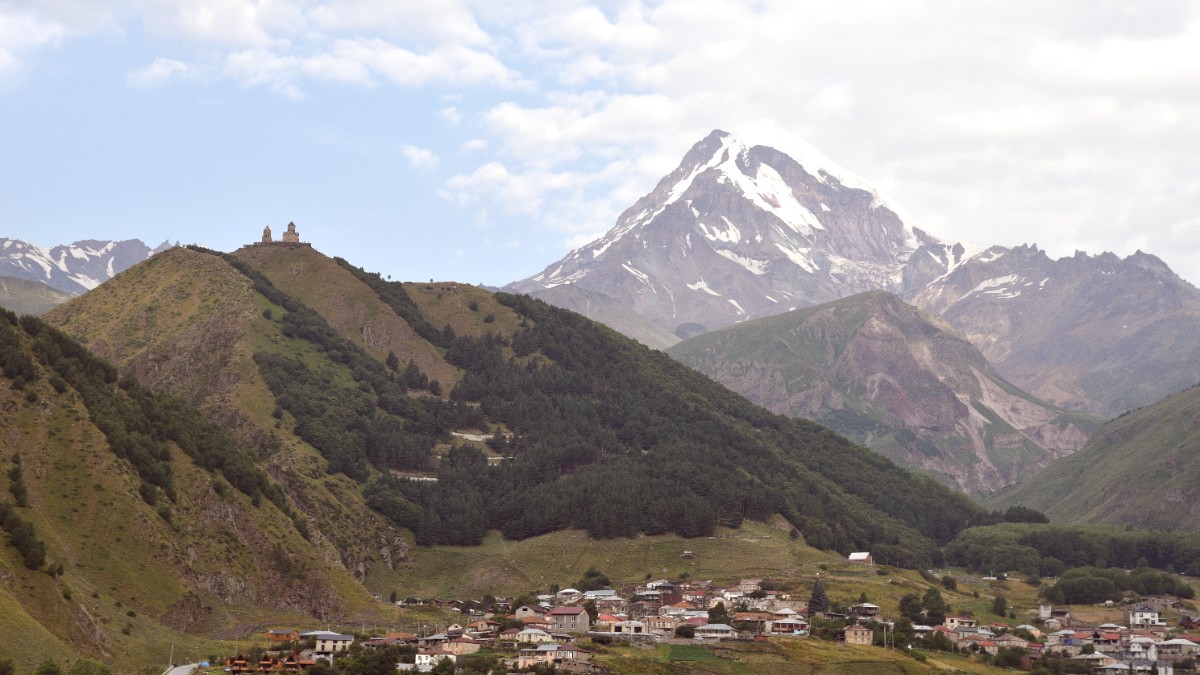
Georgia
These are the most prevalent and authentic. Family-run, they feature private rooms, sometimes with shared bathrooms, and often include breakfast and dinner (half-board). Many guesthouses are renovated traditional Svan houses, mixing historic charm and modern comfort.
More small and boutique hotels are now in Mestia. They have modern amenities, private bathrooms, professional service, and comforts for travelers seeking a higher standard. Some have restaurants and other facilities.
A few budget-friendly hostels serve backpackers and solo travelers, mainly in Mestia. They feature dormitory beds, communal areas for socializing, and shared facilities, a cost-effective option and a place to meet others.
Limited availability, mainly in Mestia, often on major booking platforms. These are good for longer stays or for families/groups wanting self-catering facilities. Explore options on Vrbo.
Many guesthouses function as homestays, directly supporting local families and a genuine cultural experience. This is a core aspect of Svaneti tourism, with revenue directly benefiting the local community. Consider TrustedHousesitters for unique stays.
Wild camping is generally permitted in the mountains, but established campsites with facilities are rare. Wild campers: be respectful of private land, pack out all trash, and follow Leave No Trace principles. Some guesthouses might allow tent pitching in their gardens for a small fee, with access to their facilities.
For broader accommodation search, Booking.com and Agoda are widely used. For specific hotel chains, IHG Hotels may have listings.
For broader searches, Booking.com and Hostelworld are widely used and reliable platforms for finding accommodation in Svaneti, specifically in Mestia.
Mestia, though not a large city, has distinct areas with distinct experiences.
All areas in Svaneti are generally very safe for tourists. The region has a low crime rate, and locals welcome guests. Use standard travel precautions for belongings, but feel secure exploring.
Staying in Mestia Center has the best proximity to most amenities, museums, and transport links for day trips (marshrutkas, shared jeeps, cable car base). Accommodation in the outskirts means more walking or short taxi rides to the center. Ushguli is the main attraction, and staying there means full immersion in the UNESCO site, but with limited amenities and a long journey to/from Mestia.
Smart booking practices ensure your preferred accommodation, especially during busy times.
During low season, many properties may close. Always call ahead to confirm availability before arriving without a reservation.
Many guesthouses prefer cash payments. Have Georgian Lari (GEL) on hand, especially outside of Mestia center.
While English is spoken in tourist areas, a translation app or basic Georgian phrases are useful for direct communication with guesthouse owners.
Mestia features a spectrum of lodging choices.
Typical Price Range: 30-50 GEL (per person)
Typical Price Range: 60-100 GEL (per person)
Typical Price Range: 120-300+ GEL (for double room)
For stays longer than a few nights, inquire directly with guesthouses for potential discounts. Some apartments or larger guesthouses might feature weekly rates, providing better value for extended visits.
Many guesthouses are family-run and very welcoming to children, often with family rooms or extra beds.
Some have gardens or outdoor play areas where children roam safely.
The half-board option streamlines meals for families.
Guesthouse stays offer a genuine cultural immersion experience for the whole family.
Hostels and guesthouses with common areas are excellent for solo travelers looking to meet others.
You can share information about hiking trails, find partners for shared jeeps to Ushguli, or simply socialize over dinner.
The communal dining experience at guesthouses offers a good way to connect with other travelers and locals.
Guesthouse hosts often provide valuable local tips and advice for exploring Svaneti.
Look for guesthouses built in traditional Svan architectural style, or those that blend parts of old Svan houses or towers.
Some families have lived in the same houses for generations, a deep connection to the region's history.